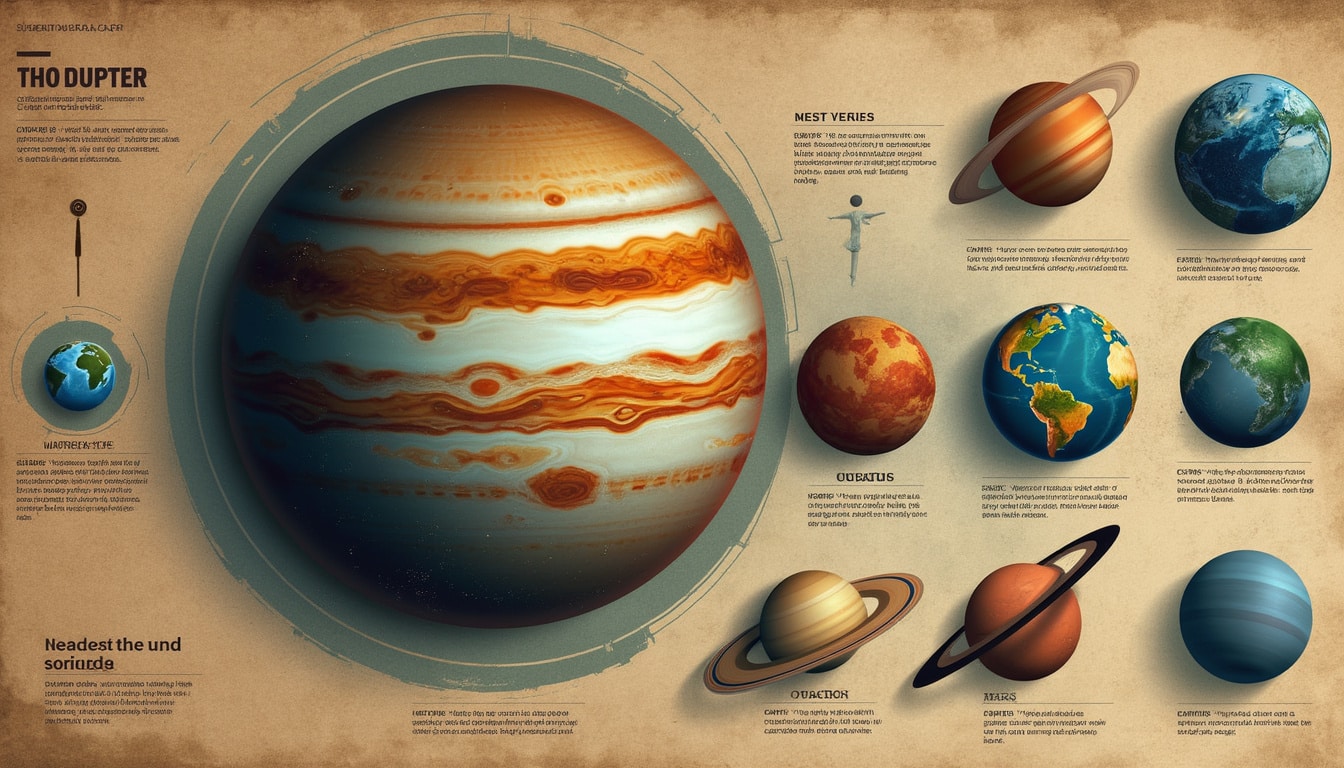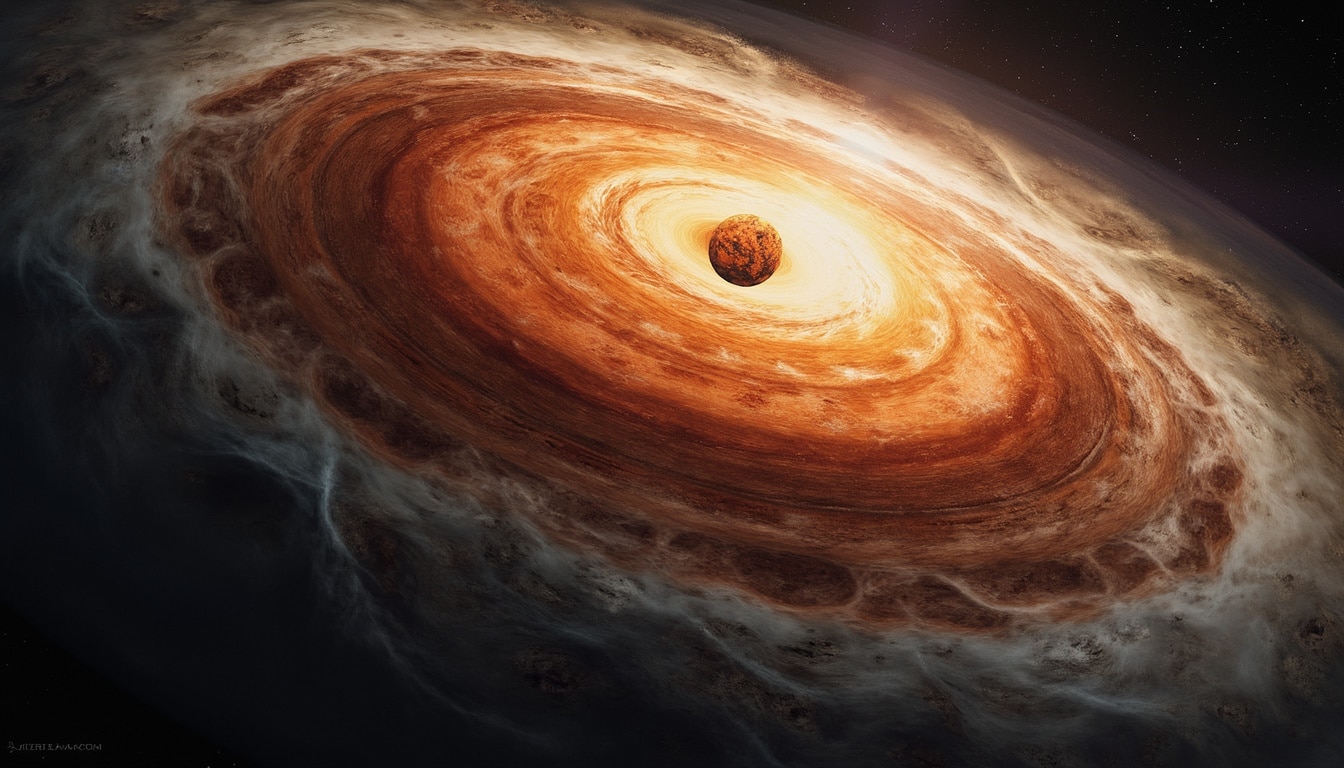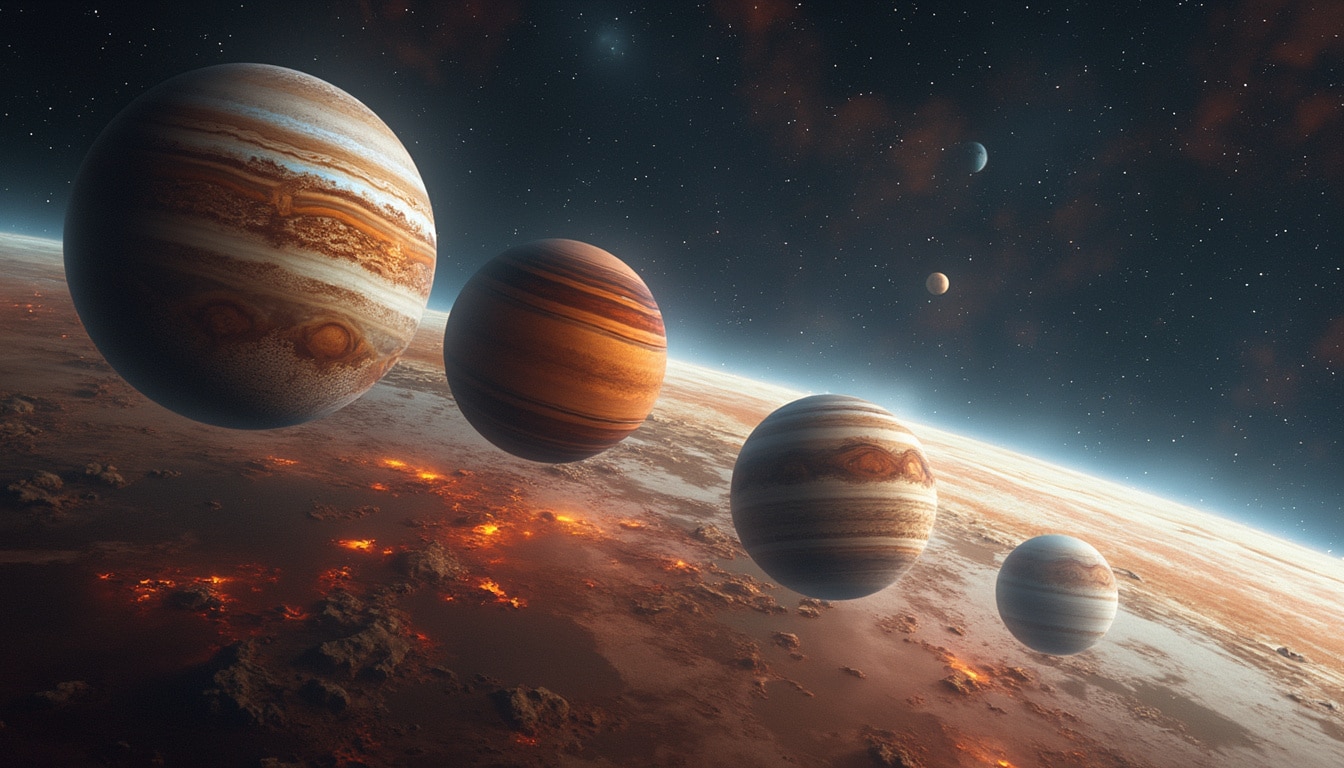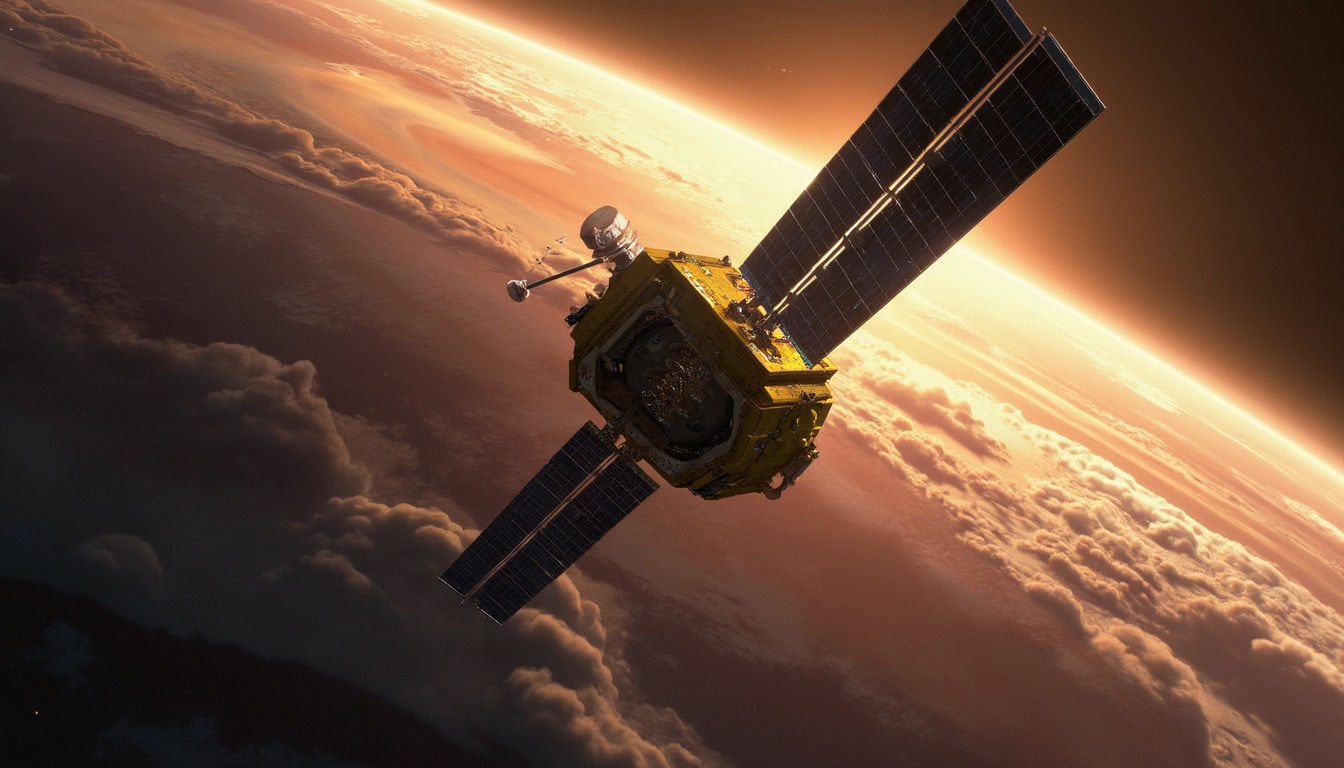When gazing up at the night sky, one cannot help but be captivated by the celestial bodies that orbit our Sun. Among these, Jupiter reigns as the largest planet in our solar system – a colossal gas giant that holds several mysteries waiting to be uncovered. This article will guide you through the fascinating features of Jupiter, elucidating its immense size, its role in the solar system, and the latest astronomical discoveries that shape our understanding of this giant planet.
Jupiter’s scale is awe-inspiring; it is more than twice the mass of all the other planets combined. This behemoth not only dwarfs its neighbors but also boasts a captivating atmosphere, an extensive system of moons, and a magnetic field that is undeniably strong. Let’s delve into the several aspects that make Jupiter a remarkable subject of study for astronomers and enthusiasts alike.
The Size and Mass of Jupiter
As the largest planet in our solar system, Jupiter’s attributes stand out. With a diameter of approximately 86,881 miles (139,822 kilometers), this gas giant is nearly 11 times wider than Earth. Its vastness creates a high gravitational pull, making it incredibly massive—about 318 times the mass of Earth. This strength has profound implications, affecting the orbits and characteristics of nearby celestial bodies.
Jupiter’s mass spawns a colossal magnetic field, which is the strongest of any planet in our solar system. This magnetic field is generated by the motion of metallic hydrogen within its core, generating a magnetosphere so large it could encompass the entire solar system from the Sun to the asteroid belt.
Density and Composition
Though massive, Jupiter’s density is surprisingly low. It has an average density of about 1.33 grams per cubic centimeter, significantly lighter than terrestrial planets like Earth. What does this mean? Jupiter is primarily composed of hydrogen and helium, with smaller amounts of methane, water vapor, ammonia, and other compounds swirling in its atmosphere.
Measurement Comparisons
In contrast to its fellow gas giants—Saturn, Uranus, and Neptune—Jupiter’s size truly outshines them all. Saturn, for instance, has a diameter of approximately 72,366 miles (116,464 kilometers) and is considerably less massive. Understanding these measurements is paramount for comprehending planetary formation and behavior within our solar system.

The Atmosphere and Weather of Jupiter
When it comes to the atmosphere, Jupiter is a true marvel. Its upper atmosphere is marked by colorful bands of clouds, primarily composed of ammonia and water. This unique structure creates a tapestry of storms and swirling winds, with the Great Red Spot serving as the most iconic storm. This immense storm is larger than Earth itself and has been raging for over 350 years.
Jupiter’s winds are themselves a topic of fascination, with speeds that can exceed 400 miles per hour (640 kilometers per hour). These powerful gales contribute to the planet’s dynamic weather patterns, including massive cyclones and anti-cyclones.
Cloud Bands and Storm Systems
The cloud bands themselves are not merely decorative. They are formed by differential rotation and varying temperatures, creating distinct zones of rising and sinking air. This complex interplay of forces results in the beautiful stripes we observe from Earth through telescopes and spacecraft imaging.
Understanding Atmospheric Dynamics
Research into Jupiter’s atmosphere is crucial for several reasons. By studying the gaseous composition and storm systems of this giant, scientists can garner insights not only into Jupiter’s origins but also into the climatic mechanics of other gas giants and even exoplanets. The parallels drawn from Jupiter’s behavior could unlock significant information about planetary atmospheres throughout the universe.

The Moons of Jupiter
Jupiter is not only remarkable for its size, but also for its extensive system of moons. It is home to over 79 known natural satellites, with four large Galilean moons—Io, Europa, Ganymede, and Callisto—being particularly noteworthy. These moons dramatically enhance our understanding of planetary systems.
Ganymede stands out as the largest moon in the solar system, even surpassing Mercury in size. Europa’s icy surface hints at a subsurface ocean, which has tantalized scientists searching for extraterrestrial life. Each moon possesses unique characteristics that contribute richly to our knowledge of celestial mechanics.
Galilean Moons and Their Importance
Galileo Galilei discovered these moons in 1610, marking a pivotal moment in astronomy as it underscored the concept of celestial bodies orbiting entities besides Earth. Studying these moons offers a glimpse into geological and atmospheric processes that can be vastly different from those on Earth.
Impact of Jupiter’s Gravity on Its Moons
Jupiter’s immense gravitational pull affects the orbits of these moons, creating interesting tidal forces and interactions. Studying these interactions can shed light on tidal heating, geological activity, and surface features on each moon. For instance, Io is known for its volcanic activity, driven by gravitational pulls from both Jupiter and its neighboring moons.

The Juno Mission and What It Reveals
The Juno mission serves as a cornerstone project aimed at unlocking the secrets of Jupiter. Launched in 2011, Juno entered Jupiter’s orbit in July 2016. Its primary aim is to explore the planet’s composition, gravity field, magnetic field, atmosphere, and internal structure.
By utilizing a highly elliptical orbit, Juno’s instruments probe the planet’s deep interior to uncover the mysteries of its formation. The spacecraft is designed to survive the intense radiation belts surrounding Jupiter, facilitating groundbreaking observations and data collection.
Key Discoveries from the Mission
One of the key findings revealed by Juno is related to the distribution of water in Jupiter’s atmosphere, which has implications for our understanding of its formation and history. The data collected will also assist scientists in exposing the intricacies of its magnetic field and understanding how the dynamics of this massive planet influence its atmosphere.
The Importance of Continued Exploration
Juno’s exploratory efforts emphasize the significance of space missions in broadening our understanding of planetary science. Each data point received increases our knowledge exponentially and presents fresh avenues for research on not only Jupiter but the nature of gas giants throughout the cosmos.

Conclusion: The Future of Jupiter Research
Understanding Jupiter’s numerous attributes, from its massive size to its complex atmosphere and extensive moon system, is essential for piecing together the grand narrative of our solar system’s history. Ongoing research and missions will continue to refine our understanding of this giant planet and its many enigmas.
As we continue to uncover the truths about Jupiter, we pave the way for broader explorations into our solar system, our closest exoplanets, and the fascinating dynamics of planetary science.




Leave a Reply